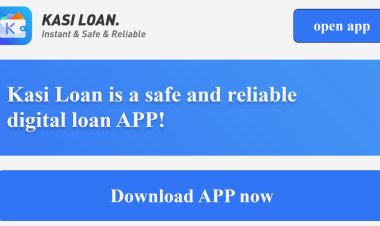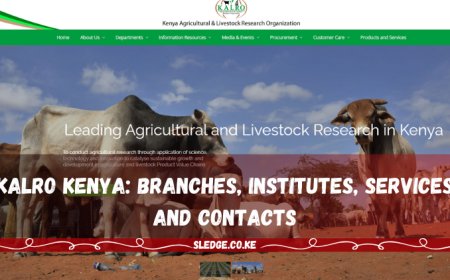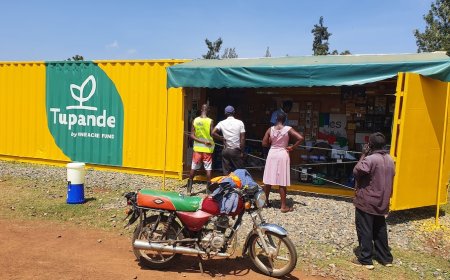NEMIS Registration 2024 Guide: Key Steps for Students, Schools, and Teachers
Unlock the key steps for NEMIS Registration 2024. Essential guide for students, parents, and teachers in Kenya to navigate the process smoothly

In the dynamic landscape of Kenya's education sector, the National Education Management Information System (NEMIS) emerges as a cornerstone, revolutionizing how educational data is managed, shared, and utilized across the country. Introduced by the Ministry of Education, NEMIS is designed to streamline the registration and management of students, teachers, and educational institutions through a centralized digital platform. This guide aims to demystify the NEMIS registration process for 2024, offering a comprehensive walkthrough for students, parents, and teachers alike.
The essence of NEMIS lies in its ability to foster informed decision-making and strategic planning within the education sector. By hosting detailed data linked to unique identifiers for students and institutions, NEMIS facilitates a more organized and efficient education management process. This not only enhances the governance of educational data but also significantly contributes to the quality and accessibility of education in Kenya. From capturing learner and staff data to managing school finances, NEMIS encompasses a broad spectrum of functionalities designed to support the Kenyan education ecosystem.
Understanding the intricacies of NEMIS registration is vital for all stakeholders involved. Whether you're a student embarking on your educational journey, a parent keen on ensuring a smooth registration process for your child, or a teacher striving to navigate the administrative aspects of NEMIS, this guide is tailored to provide you with all the necessary insights. With a focus on clarity, simplicity, and thoroughness, we delve into the requirements, processes, and troubleshooting tips to ensure a seamless NEMIS experience for everyone involved.
As we explore the registration process, key modules, and portal navigation, we aim not only to inform but also to empower students, parents, and teachers to utilize NEMIS effectively. This guide stands as a testament to our commitment to enhancing the educational landscape in Kenya, making it more transparent, accountable, and accessible for all.
READ ALSO: 2024 Guide to NTSA Vehicle Inspection Booking in Kenya: Steps & Prep
Understanding NEMIS
The National Education Management Information System (NEMIS) in Kenya represents a pivotal shift towards digitalization in the education sector, aiming to enhance efficiency, transparency, and accountability. This digital platform is instrumental in gathering, storing, and processing data related to learners, teachers, and educational institutions across the nation. Its primary objective is to support the Kenyan Ministry of Education in making well-informed decisions that promote educational policies and initiatives.
Overview of NEMIS
NEMIS is a comprehensive system designed to centralize and streamline the management of educational data. By introducing a unique identifier for every student and institution, it simplifies the tracking of academic journeys and institutional performance. This system ensures that data related to students' academic progress, teacher assignments, and school infrastructure are easily accessible to authorized personnel, thereby facilitating a more organized educational environment. The adoption of NEMIS underscores Kenya's commitment to harnessing technology for educational advancement, aiming to create a data-driven culture within the sector.
Key Modules of NEMIS
The structure of NEMIS is built around four main modules, each catering to different aspects of educational management:
- Institutions Module: This module is the cornerstone of school administration within NEMIS. It includes critical data on school registration, infrastructure, utilities, and emergency reporting. Schools can list their facilities, report emergencies, and highlight co-curricular activities, laying a foundation for comprehensive educational planning and resource allocation.
- Learners Module: Central to NEMIS, this module records all learner-related information. From registration details and Unique Personal Identifiers (UPI) to academic performance and talent tracking, it ensures that every student's educational journey is meticulously documented. This module also facilitates the management of student mobility, enabling smooth transitions for students transferring between schools.
- Staff Module: This module captures detailed information about teaching and non-teaching staff. It includes data on teacher assignments, areas of expertise, and professional mobility. By documenting the qualifications and responsibilities of educational personnel, NEMIS aids in optimizing staff deployment and professional development initiatives.
- Finance Module: Managing the financial aspects of educational institutions is the focus of this module. It tracks income, expenditures, fee structures, and the utilization of development funds. This financial data is crucial for ensuring accountability and effective resource management within schools.
NEMIS Registration Requirements and Process
Navigating the registration process in the National Education Management Information System (NEMIS) is a critical step for students, schools, and teachers in Kenya. Now Let us delves into the intricacies of registering various stakeholders within the NEMIS framework, ensuring that each entity is well-informed about the prerequisites and procedural steps necessary for successful enrollment.
For Students

The registration of students in NEMIS is a systematic process designed to capture comprehensive learner data, from basic identification details to academic and extracurricular information. Here's a step-by-step breakdown:
- Collect Necessary Documents: Students or their parents must gather all required documentation, including the student's birth certificate, ID for parents or guardians, and any academic records if transferring from another school.
- Submission of Information: The collected details must then be submitted through the school administration. This includes the student's name, date of birth, gender, nationality, special needs (if any), and contact information of the parents or guardians.
- School's Role in Registration: The school admin logs into the NEMIS portal, navigates to the 'Learners Module,' and enters the student's information. Upon completion, a Unique Personal Identifier (UPI) is generated for the student, marking their official entry into the NEMIS database.
For Schools

School registration on NEMIS is pivotal for the operationalization of educational activities within the digital platform. The process entails:
- Accessing the NEMIS Portal: School administrators need to visit the official NEMIS website and locate the registration section for new institutions.
- Filling Out School Information: Detailed information about the school, including name, type, ownership, infrastructure, and contact details, must be accurately filled in.
- Submission and Approval: After reviewing the information for accuracy, the application is submitted for approval. Upon acceptance, the school receives its unique NEMIS code, which is essential for all future transactions and data management within the system.
For Teachers
Teacher registration within NEMIS focuses on capturing educator-specific data, aiding in the management of teaching resources and assignments across the country:
- Gathering Personal and Professional Details: Teachers are required to provide their educational qualifications, subjects of specialization, and employment details, among other information.
- School Administration Submission: Similar to student registration, the school admin is responsible for entering teacher data into the NEMIS system. This process ensures that each teacher is allocated a unique identifier, linking them to their current institution and recording their professional journey.
Key Takeaways
- Preparation is Crucial: Ensuring that all necessary documents and information are ready before beginning the registration process can significantly streamline the enrollment experience.
- School's Central Role: Schools act as the primary interface for entering data into NEMIS, highlighting the importance of administrative diligence and accuracy.
- Systematic Approach: Following the prescribed steps for each stakeholder category (students, schools, teachers) ensures a smooth and error-free registration process.
Navigating the NEMIS Portal
Mastering the NEMIS portal is essential for students, teachers, and school administrators in Kenya, facilitating seamless access to educational data and resources.
Login and Dashboard Overview
The first step to accessing the myriad of features within NEMIS is logging into the portal:
- Accessing the Portal: Navigate to the official NEMIS website (nemis.education.go.ke) and locate the login section.
- Entering Login Details: Users must input their username and password. For first-time users, these details are usually provided upon the successful registration of the institution or individual within the NEMIS system.
- Dashboard Navigation: Upon successful login, users are greeted by the dashboard, which serves as the central hub for accessing various modules and functionalities. The dashboard is designed to provide a comprehensive overview of the system’s features, including learner registration, staff management, financial tracking, and institution data management.
Adding and Managing Data
The core utility of NEMIS lies in its ability to facilitate the addition and management of educational data across several modules:
- Learners Module: School administrators can add new learners, update existing learner information, and track academic progress. This module is crucial for maintaining up-to-date records of student performance, mobility, and other key metrics.
- Institutions Module: Allows for the registration of new institutions and the updating of school details such as infrastructure, utilities, and co-curricular activities. Accurate data within this module is vital for resource allocation and policy development.
- Staff Module: Teachers and administrative staff are registered here, with detailed records on their qualifications, areas of specialization, and employment history. This module supports the strategic deployment and professional development of educational personnel.
- Finance Module: School administrators can enter and manage financial data, including income, expenditure, and fee structures. Transparent and accurate financial reporting is essential for accountability and efficient resource management.
NEMIS Contacts
Despite its user-friendly design, you may need help with issues or require assistance using the NEMIS portal. If you need help, you can contact the NEMIS support team using the following details:
- Telephone: +254-020-3318581, +254700000000
- Email: nemissupport@education.go.ke, nemis@education.go.ke
- Website: http://nemis.education.go.ke/
- Office: Jogoo House B, Harambee Avenue, Nairobi, Kenya
- Postal address: PO Box 30040-00100 Nairobi, Kenya
READ ALSO: Kenyan Passport Tracking 2024: Complete Online & SMS Guide
Frequently Asked Questions (FAQs)
How can I retrieve a forgotten NEMIS number?
- If you've forgotten your NEMIS number, the process typically involves contacting the school's administration for students or the educational institution's administrative department for teachers. They can retrieve the number through the NEMIS portal using your personal details.
What should I do if I encounter errors during the registration process?
- Errors during registration can often be resolved by double-checking the information entered for accuracy and completeness. If issues persist, reaching out to the NEMIS support team via their official contact details can provide resolution.
Can I update my information on the NEMIS portal after registration?
- Yes, updates to personal or institutional information can be made by logging into the NEMIS portal and navigating to the respective module (Learners, Staff, Institutions) to make necessary changes. It's important for schools to keep records up-to-date to ensure accurate data management.
Troubleshooting Tips
- Technical Difficulties with Logging In: If you're experiencing issues logging into the NEMIS portal, try clearing your browser's cache or accessing the portal using a different browser. If the problem persists, contact the NEMIS support team for assistance.
- Error Messages During Data Entry: When encountering error messages during data entry, ensure that all required fields are completed and that the information provided matches official documents. Errors can often be attributed to missing or incorrect data.
- Delays in UPI Generation: Delays in generating UPI numbers for new students or teachers can occur during peak registration periods. If you experience a significant delay, it’s advisable to contact the NEMIS helpdesk for an update on the status of your registration.
- Accessing Support: For additional support, the NEMIS portal offers contact details for technical assistance, including email addresses and phone numbers. Don’t hesitate to reach out if you encounter issues that you're unable to resolve independently.
Conclusion
Efficiently navigating the NEMIS portal is crucial for enhancing the educational experience and administrative processes within Kenya's educational sector. By familiarizing yourself with the FAQs and troubleshooting common issues, students, parents, and teachers can more effectively manage their interactions with the NEMIS system, ensuring a smoother and more productive educational journey.
This section aims to empower NEMIS users with the knowledge to address common queries and overcome potential hurdles, contributing to a more informed and seamless educational management experience.













































































